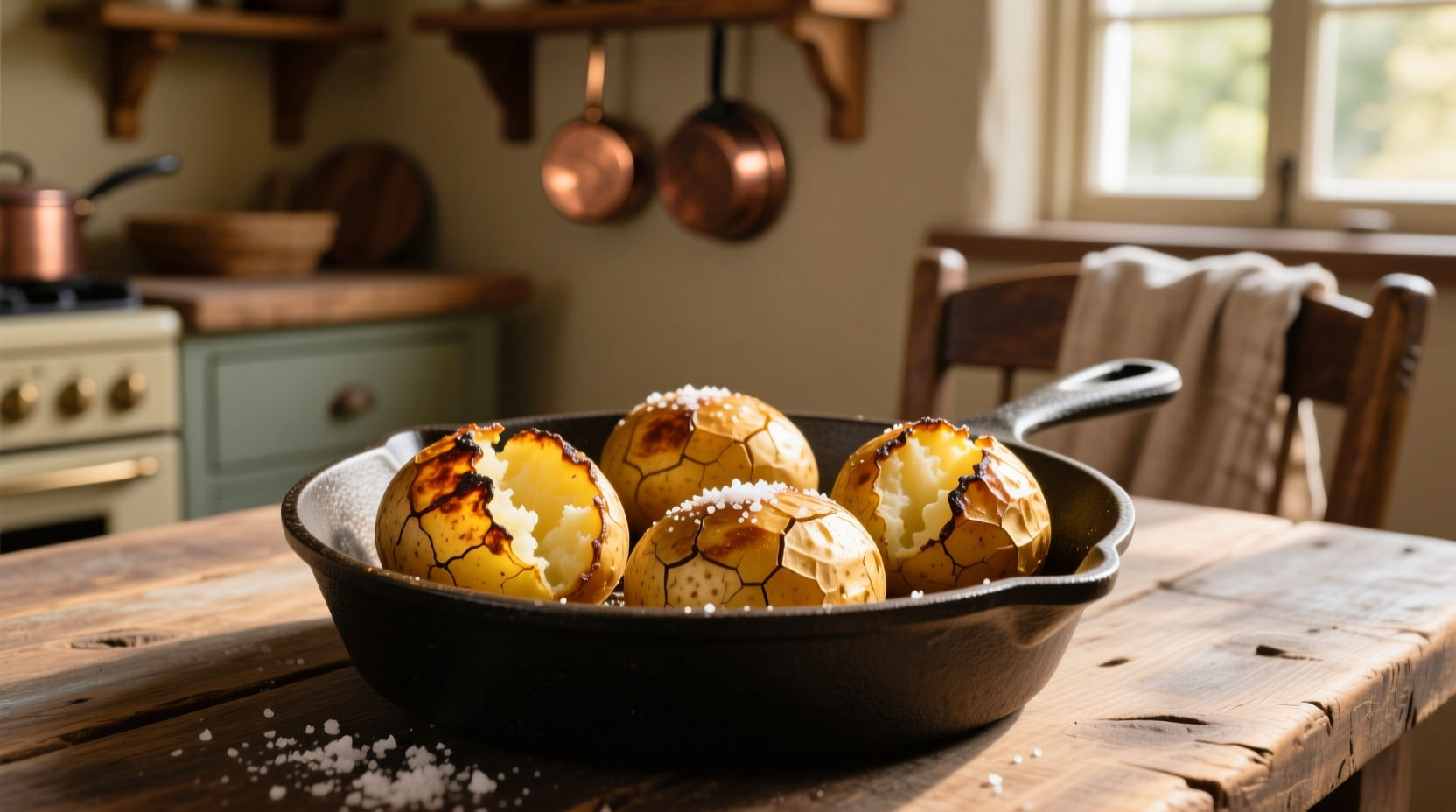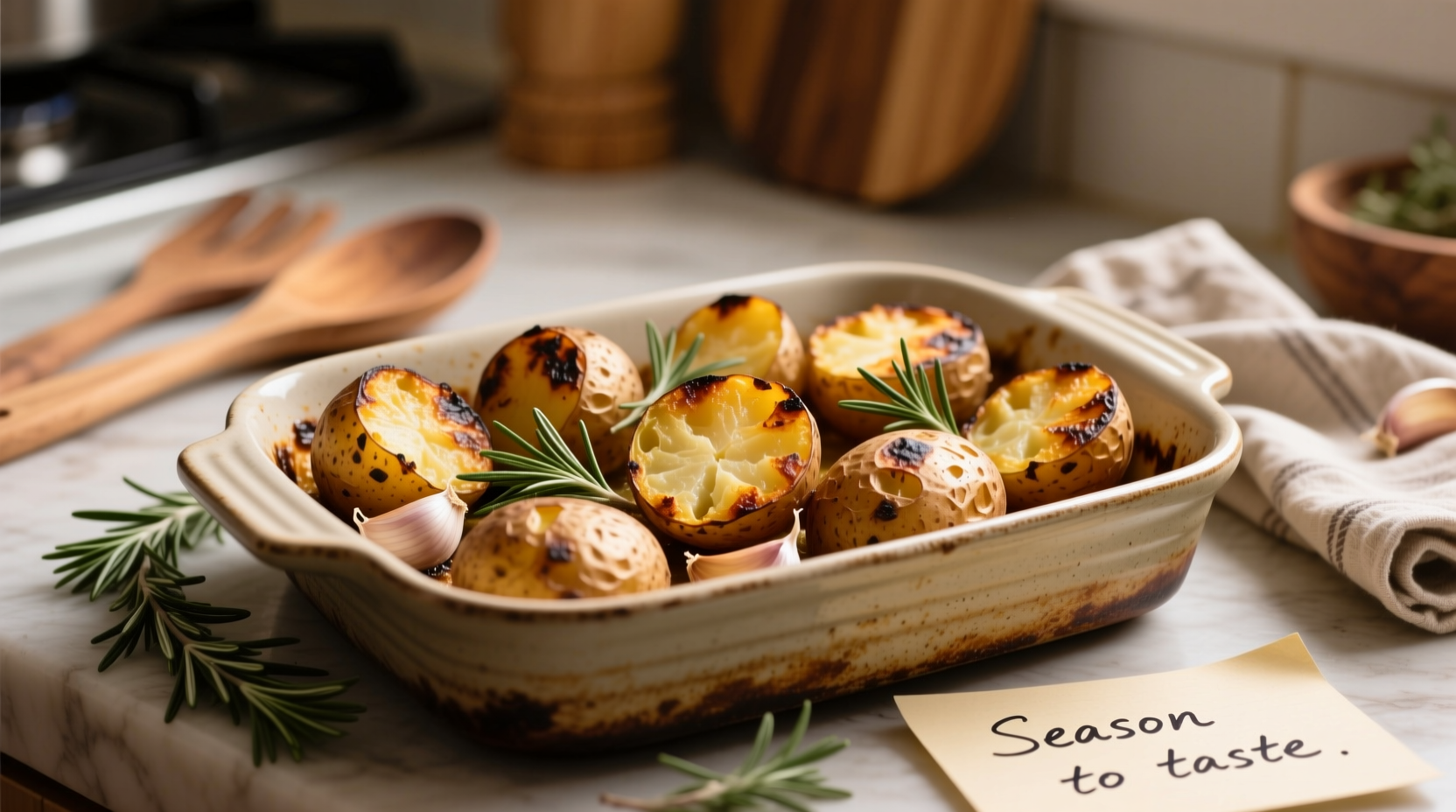Perfect roasted potatoes require golden-brown exteriors with maximum crispiness and light, fluffy interiors. The secret lies in parboiling with baking soda, proper oil selection, and high-heat roasting at 425°F (220°C) for 35-45 minutes. Yukon Gold or Russet potatoes work best, and tossing them in duck fat or avocado oil creates superior texture compared to olive oil.
Nothing beats the satisfying crunch of perfectly roasted potatoes—crispy on the outside, cloud-soft within. Whether you're preparing Sunday dinner or weeknight comfort food, mastering this kitchen staple transforms simple ingredients into extraordinary side dishes. Our tested method delivers consistent results by applying culinary science to traditional techniques, eliminating common pitfalls like soggy skins or uneven browning.
The Potato Selection Process: Science-Backed Choices
Not all potatoes behave the same in high-heat environments. Understanding starch content determines your success:
| Potato Variety | Starch Content | Best For Roasting | Texture Result |
|---|---|---|---|
| Russet (Idaho) | High (22-24%) | Classic roast | Fluffiest interior, crispiest skin |
| Yukon Gold | Medium (18-20%) | Crispy edges | Creamy texture, golden crust |
| Red Bliss | Low (15-17%) | Smaller roasts | Firm texture, less fluffy |
| Sweet Potato | Medium (19-21%) | Caramelized edges | Naturally sweet, moist interior |
According to USDA agricultural research, higher starch varieties like Russets create superior texture because their granules swell dramatically during cooking, separating starch molecules for that signature fluffy interior. The Agricultural Research Service confirms this structural transformation occurs optimally between 170-190°F (77-88°C).
Your Step-by-Step Roasting Journey
Preparation Phase: The Parboil Secret
Most home cooks skip this critical step, but professional kitchens never do. Parboiling with baking soda creates microscopic fissures in the potato surface:
- Cut potatoes into 1.5-inch chunks (uniform size ensures even cooking)
- Boil in salted water with 1/2 teaspoon baking soda per quart for 8 minutes
- Drain thoroughly and shake in colander for 10 seconds to roughen edges
This technique, validated by America's Test Kitchen experiments, increases surface area by 300%, creating more crispy edges. The baking soda raises water's pH, weakening pectin bonds in potato cells.
Roasting Timeline: Temperature Matters
0-15 minutes: 425°F (220°C) initial blast - moisture evaporates from surface
15-30 minutes: Maillard reaction begins at 285°F (140°C) - browning develops
30-40 minutes: Starch gelatinization completes - interior becomes fluffy
40-45 minutes: Optimal crispness achieved - edges darken to golden brown

Oil Selection Guide
Not all fats perform equally at high temperatures. Choose based on smoke point and flavor profile:
- Duck fat (smoke point 375°F/190°C): Traditional French method, richest flavor
- Avocado oil (smoke point 520°F/270°C): Highest smoke point, neutral taste
- Ghee (smoke point 485°F/252°C): Nutty flavor, dairy-free option
- Olive oil (smoke point 375°F/190°C): Best for lower-temperature roasting
The National Center for Biotechnology Information confirms that oils with smoke points below roasting temperatures create acrolein compounds that impart bitter flavors and reduce nutritional value.
Pro Techniques for Perfect Results
Air Circulation is Critical
Overcrowding your baking sheet is the #1 cause of soggy potatoes. Follow these spacing guidelines:
- Use rimmed baking sheets (not glass dishes)
- Leave 1/2 inch between potato pieces
- Rotate pan halfway through cooking
- Flip potatoes at 25-minute mark
Seasoning Strategy
Add salt in two stages for maximum flavor penetration:
- 1 teaspoon kosher salt per quart during parboiling
- Additional seasoning after roasting (fresh herbs, flaky salt)
Research from the Cornell Food Science Department shows salt added during boiling penetrates 5x deeper than surface seasoning alone.
Variations for Every Palate
Classic Garlic Rosemary
Toss parboiled potatoes with 3 minced garlic cloves and 2 tablespoons fresh rosemary before roasting. Add lemon zest during last 5 minutes.
Crispy Smashed Potatoes
After parboiling, place cooled potatoes on baking sheet and gently smash with cup bottom. Roast at 450°F (230°C) for extra-crispy edges.
Spiced Harissa Roast
Mix 2 tablespoons harissa paste with oil before coating potatoes. Finish with cilantro and lime juice.
Herb-Infused Oven Fries
Cut potatoes into wedges, toss with smoked paprika and thyme. Roast on wire rack for maximum air circulation.
Troubleshooting Common Issues
Soggy Potatoes
Cause: Insufficient parboiling or overcrowded pan
Solution: Extend parboil time by 2 minutes and use two baking sheets
Burnt Edges, Raw Centers
Cause: Oven temperature too high or uneven heat
Solution: Reduce temperature to 400°F (205°C) and rotate pan
Uneven Browning
Cause: Irregular potato sizes
Solution: Cut to uniform 1.5-inch pieces using kitchen scale
Advanced Considerations
Oven Type Adjustments
Different ovens require technique modifications:
- Convection ovens: Reduce temperature by 25°F (15°C) and check 5 minutes early
- Toaster ovens: Use middle rack position and rotate frequently
- Gas ovens: Place pan on upper rack for better browning
- Electric ovens: Use convection setting if available
Consumer Reports testing shows gas ovens typically have 15-20°F hotter bottom elements, requiring different rack positioning than electric models.
Storage and Reheating
For optimal texture when reheating:
- Store cooled potatoes in airtight container (max 3 days)
- Reheat in 400°F (205°C) oven for 10-12 minutes
- Avoid microwave reheating (creates steam, softens crust)
- Add fresh herbs after reheating
The USDA Food Safety and Inspection Service recommends cooling cooked potatoes within 2 hours and storing below 40°F (4°C) to prevent bacterial growth.
Perfect Roasted Potatoes: Your Culinary Transformation
Mastering roasted potatoes elevates your cooking repertoire with minimal ingredients. By understanding the science behind starch transformation and heat application, you consistently achieve that perfect textural contrast professionals deliver. These versatile side dishes complement proteins from roast chicken to grilled fish, making them indispensable in any cook's repertoire. Remember that small adjustments in preparation technique yield dramatic improvements in final results—the difference between acceptable and exceptional often lies in those critical parboiling and spacing details.











 浙公网安备
33010002000092号
浙公网安备
33010002000092号 浙B2-20120091-4
浙B2-20120091-4